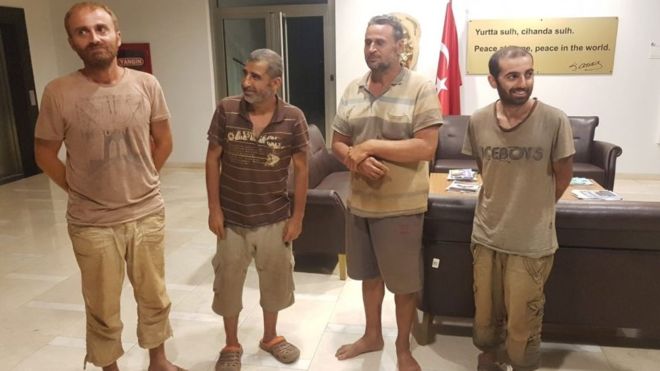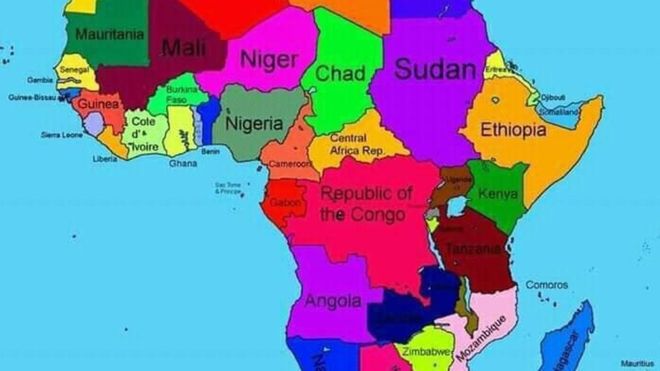Lack of remains from Ethiopian 737 crash frustrates next of kin

A crater surrounded by barbed wire and guarded by police marks the spot where Ethiopian Airlines Flight 302 plunged to earth after a terrifying six-minute flight, killing 157 people and sending Boeing, the plane’s manufacturer, into turmoil.
In the seven weeks since the disaster, the grief of family members has been joined by growing frustration over what they say is a lack of information from authorities and the failure to receive the remains of their loved ones.
“We don’t know if they have our daughter’s body. We don’t know if they have pieces of her body,” Nadia Milleron, whose daughter Samya Stumo died in the crash, said in an interview. She says she’s spoken to mothers of other victims who also crave some “physical confirmation.”
Temporary death certificates
The Ethiopian government says human tissue has been gathered by a team led by Interpol and Blake Emergency Services, a Derbyshire, England-based company that specialises in identifying victims of disasters that will test the material for DNA. The government has said it would provide temporary death certificates, which could help with insurance and probate.
Precise identification will be difficult because of the nature of the March 10 crash. The doomed Boeing 737 Max reached speeds exceeding 500 miles per hour (805 kilometers per hour) before gouging a hole 10 meters deep in a farm field in Bishoftu, about 40 miles (64 kilometers) south of the Ethiopian capital, Addis Ababa.
Villagers described a horrific landscape of shattered machinery and bodies.
“After the site was secured, the Red Cross came in and took and collected the body parts. This took a long time to do because there was fire,” said Tamru Katama, a local militia member. “It was a terrible day – even now we don’t have the appetite to eat.”
Milleron visited the site in the days afterward. “We saw all this debris, all this digging,” she said.
Site clean up
Earth movers had been brought in and now the site shows tire marks and mounds of dirt.
Robert A. Jensen, chairman of Kenyon International Emergency Services, a Houston-based disaster-management firm not involved in the Ethiopian crash, said the site clean up appeared to happen so quickly that some materials may never be recovered.
Processing such a site would normally take weeks or months. Crews need to dig until they reach dirt that wasn’t damaged, he said.
Asrat Begashaw and Biniam Demssie, spokesmen for the state-owned Ethiopian Airlines, didn’t respond to messages seeking comment on the cleanup or comments of family members. The commissioner-general of Ethiopia’s federal police commission, Endashaw Tassew, and a Transport ministry spokesman also didn’t respond to calls and messages.
Foreign ministry spokesman Nebiat Getachew declined to comment.
Some 15 federal and regional police officers were guarding the site earlier this week. The ground around the crater, smoothed over by bulldozers, has been fenced off with barbed wire and wooden posts bearing scraps of yellow police tape.
‘Challenging to identify remains’
The pace of visits from family members of the dead has slowed, the police said.
“Relatives of victims were saying, ‘We have to go inside the site where our relatives died,’” said Sergeant Ejigu Dogiso. Now, he said, “not even the relatives of the victims are coming anymore, we are just sitting here day and night.”
The police say they have had to rely on local residents for food and water.
It’s understandable that identification is taking time, said Jonathan Arden, a forensic pathologist and the president of the US National Association of Medical Examiners.
“In areas like this it will be an incredibly detailed and arduous task to collect and identify this piece, this piece, this piece,” Arden said in an interview. The way the site has been cleared and groomed leaves its own set of challenges for identifying remains, he said.
“You now have obliterated whatever evidence is left,” he said. “You have to hope you’ve documented everything very well.”
Death certificates usually require identifiable remains, but can be issued if authorities are certain a person was on a crashed plane, and there’s no evidence that the person is alive, Arden said.
The certificates allow insurance claims and disposition of wills to proceed so families aren’t “dragged down” by legal proceedings, Arden said. They can also be a milepost in the grieving process.
“People need to have the certainty that my loved one died,” he said.
‘There are no bodies’
Milleron, of Sheffield, Massachusetts, said authorities have told her that only small body parts were found and nothing has been identified as the remains of her daughter.
“My whole focus is to get her body and take her home and have a proper service for her. We’re Orthodox Christian. We need it for the funeral,” Milleron said. “It took me a long time to understand there was no bodies.”
Hiral Vaidya, a Toronto-area resident who lost six family members on Flight 302, said “There was nothing left of them. We had nothing to cremate.”
Her husband, Manant Vaidya, lost his parents, his sister and brother-in-law, and their two teenage daughters.
Law suit
The Vaidyas are among the plaintiffs in a lawsuit brought on Monday against Boeing that alleged the plane maker was negligent in its design and certification of the crashed aircraft, including a system on the jet that forces its nose down in some circumstances.
The Vaidyas and other relatives of victims spoke at a news conference that day in Chicago arranged by the plaintiffs’ lawyers, Clifford Law Offices of Chicago and Cotchett, Pitre & McCarthy LLP of San Francisco.
“We want their souls to rest in peace,” Hiral Vaidya said. “But we cannot have peace in the way that our loved ones died in the horrific tragedy, and in the way that no remains were properly preserved or recorded.”
The air disaster in Ethiopia, and the crash of another 737 Max off the coast of Indonesia last October, led to the grounding of the plane worldwide.
Boeing declined to comment directly on the lawsuit, Peter P. Pedraza, a Boeing spokesman, said in an email. “Boeing extends our heartfelt condolences and sympathies to the families and loved ones of those onboard Ethiopian Airlines Flight 302,” Pedraza said. “As the investigation continues, Boeing is cooperating fully with the investigating authorities.”
Source: News24.com





